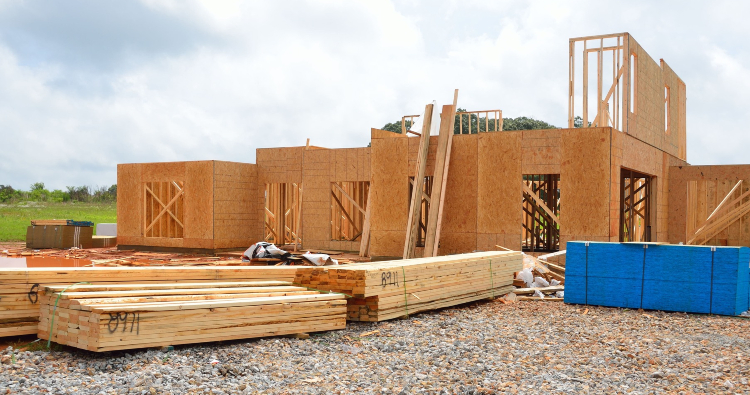
Whether you’re a developer who has just purchased a plot of land and is looking to start construction, a homeowner who’s looking to build an extension, or any other individual looking to start construction on your land, there are several steps you need to take before you can break ground.
No-one wants to find Japanese knotweed growing on their land, but if you’ve got plans to start construction, Japanese knotweed can be especially troublesome! If you currently have knotweed present on a plot of land where you’re planning construction and you’re wondering whether or not it’s possible to still build on land, you’re in the right place!
You may be relieved to know that yes, it’s possible to build on ground with Japanese knotweed! Just because land has Japanese knotweed present doesn’t mean that it’s a write off. However, if the land you’re looking to build on has knotweed, there may be a few extra steps in your journey before you can get started on construction.
How can I build on land with Japanese knotweed present?
The first step to any construction project is to get planning permission from your local council. Most councils have their own policies regarding the control, management, and development of land with a knotweed presence. When you apply for your planning permission your local council will have more information on your local knotweed policies.
Before you start building, it’s essential to remove knotweed from any affected land. While there is currently no legal obligation to remove Japanese knotweed before starting construction, it is very strongly recommended that the weed is removed before construction on the land begins.
When making knotweed removal plans, it’s important to remember that no matter what area of the UK you reside in, under the Wildlife and Countryside Act of 1981 it is a criminal offence to move contaminated soil to areas other than approved waste sites.
Why should you remove Japanese knotweed before starting construction?
There are a number reasons why it’s vital for Japanese knotweed to be removed before construction begins; essentially, it all comes down to the fact that Japanese knotweed has a very extensive rhizome system that can extend three meters deep and seven meters across from a visible plant, and in peak growing conditions, it can grow as much as 10cm a day!
The extensive rhizome systems growing below a house can potentially cause the land to become unstable or weakened. However, it’s more likely that the plant will cause issues by growing inside of pipes, around underground cables, into hollow wall spaces, and even in cracks in-between bricks.
Furthermore, if you’re constructing a building you’re hoping to sell upon completion, it’s worth knowing that the presence of knotweed can reduce a house value by up to 10%!
If you’re planning construction on land with a knotweed presence, you may benefit from Japanese knotweed removal services like those offered by Taylor Total Weed Control. Click the button below to find out more about the different treatment plans we offer.
Japanese Knotweed Removal
If you’d like to talk with a professional to discuss your property and the knotweed removal options available to you, why not reach out today and arrange your FREE Japanese knotweed survey? One of our professionals will survey your land and let you know whether or not knotweed is present on your property, how extensive it is, and what treatment is best for you.
Free Knotweed Survey
Read More: Japanese Knotweed and Planning Permission
